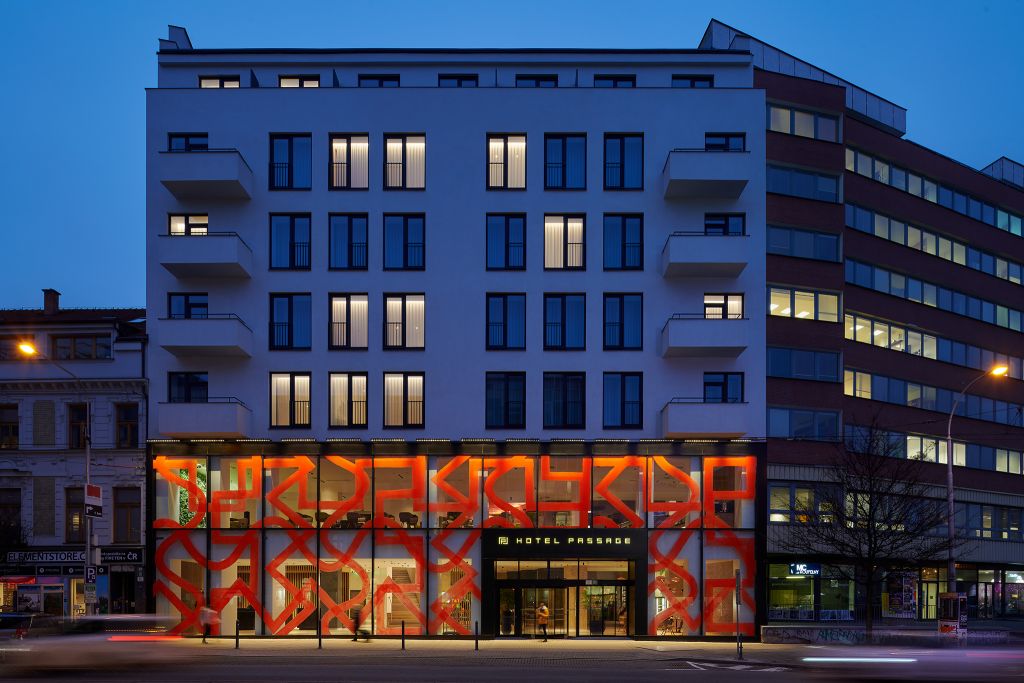PETR KVÍČALA
Petr Kvíčala is one of the prominent personalities of Czech abstract, non-representational painting. He belongs to the generational wave, which, at the turn of the eighties and nineties, vigorously expanded and transformed the semantic and formal ground plan of Czech art. His work does move forward over time, but certain elements and principles such as repetition, geometry, or the procedural approach to painting keep constantly reappearing. The principle of repetition and the ornament do not only belong to the artistic repertoire of Indigenous peoples or modernist painters of the mid-twentieth century. They are absolutely naturally used even by contemporary artists. For Petr Kvíčala, the ornament is one of the ways of giving a contemporary painting some justification without returning to an illustrative narrative. For him, however, the ornament is not only a way to link these seeming opposites, but above all, an expression of the general principles and the rhythm of the outside world. Petr Kvíčala is also known for his environmental painting interventions in architecture and for his collaboration with excellent architects, and his works are represented in all major public collections, including the National Gallery in Prague or the Moravian Gallery in Brno, and in many private collections in the Czech Republic and abroad.
Glass Ornaments
It is said that in good architecture, in addition to the building itself, what plays its role is also the location and its history, the relationship between the external and internal environments, societal and social aspects, as well as something that is not directly related to the architecture itself, bringing another quality, another understanding of time. This is the main reason why art enters architecture, taking on different roles. Functionalism and ornament, structure and line, material and color.
There are three basic line ornaments on the glass façade, which lead in two intersecting directions. Ornaments are protecting us from chaos, danger, and misunderstanding. It is the order behind things, behind the world, invisible but effective. The ornaments’ directions are based on rectangular functionalist architecture. On horizontals and verticals. Wavy lines, zig-zag lines and battlement lines. Or, another option: a circle, a triangle and a square. Straight and circular: two basic movements which all the other movements are composed of. Generosity coming from without as well as from within.
Ceiling Painting
For the ceiling painting above the bar at the entrance to the restaurant on the first floor, the author took into account, in addition to many architectural and social aspects, the ornaments on the glass facade. Therefore, Kvíčala used again all three basic ornaments, however, this time with a different relationship to architecture. The ornaments have three directions based on an equilateral triangle which means that their clash forms a six-pointed star, and neither direction is perpendicular or parallel to the rectangular architecture. He divided all line intersections twice by other lines until a seemingly almost chaotically organic structure was formed. However, it is based on a geometric order, which is freehand drawn. Constant division is the simplest and basic principle of reproduction, it is thus a symbol of vitality, as we know it from ancient Greek ornaments. And since red is a symbol of passion and vitality, the circle closes.
Glass Ornaments
It is said that in good architecture, in addition to the building itself, what plays its role is also the location and its history, the relationship between the external and internal environments, societal and social aspects, as well as something that is not directly related to the architecture itself, bringing another quality, another understanding of time. This is the main reason why art enters architecture, taking on different roles. Functionalism and ornament, structure and line, material and color.
There are three basic line ornaments on the glass façade, which lead in two intersecting directions. Ornaments are protecting us from chaos, danger, and misunderstanding. It is the order behind things, behind the world, invisible but effective. The ornaments’ directions are based on rectangular functionalist architecture. On horizontals and verticals. Wavy lines, zig-zag lines and battlement lines. Or, another option: a circle, a triangle and a square. Straight and circular: two basic movements which all the other movements are composed of. Generosity coming from without as well as from within.
Ceiling Painting
For the ceiling painting above the bar at the entrance to the restaurant on the first floor, the author took into account, in addition to many architectural and social aspects, the ornaments on the glass facade. Therefore, Kvíčala used again all three basic ornaments, however, this time with a different relationship to architecture. The ornaments have three directions based on an equilateral triangle which means that their clash forms a six-pointed star, and neither direction is perpendicular or parallel to the rectangular architecture. He divided all line intersections twice by other lines until a seemingly almost chaotically organic structure was formed. However, it is based on a geometric order, which is freehand drawn. Constant division is the simplest and basic principle of reproduction, it is thus a symbol of vitality, as we know it from ancient Greek ornaments. And since red is a symbol of passion and vitality, the circle closes.







